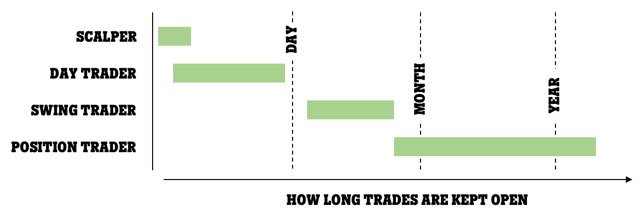
Compare Forex Brokers!
Compare top Forex brokers side-by-side and find the best fit for your trading needs. Start your comparison now!


A trading plan is going to help you decide on how Forex trading fits into your life.
Your trading plan will define you as a trader. Developing a trading plan will give you a chance to think about what kind of trader you are, and what that trader does differently. Different types of traders will rely more on one set of tools than another, trade at different times of the day, and hold trades for longer periods of time.
If you will excuse the analogy, this is similar to when a chef starts their cooking career. Before they can choose their recipes, they first need to understand what a chef's lifestyle is like, and the recipes their chosen cuisine will dictate.
Creating a trading plan will consider the trader profile that suits your trading style, and how that dictates the kind of trades you make, and the time of day you make them. If you’re planning to generate an income from trading, creating a trading plan is the first step before making your first trade.
Trader profiles are very different and will dictate what type of trader are you going to become.
Each of these trader profiles is different - with a different set of goals, risk aversion, and time commitment. While each of these traders is placing trades on the market, what makes them most different from each other is the length of time they leave their trades open.

The Scalper: Scalping is high risk, high reward trading strategy used by expert traders. The trading day is full of volatile periods which requires scalpers to constantly monitor the charts for a good time to exit the trade. It is very high pace trading, with many small trades opening and closing all the time. Scalpers usually trade the openings of major markets.
The Day Trader: Day trading is slightly less risky than scalping and ideal for those who like to see their profit at the end of every day. This strategy is not for newcomers, and not for traders who hope to leave their trades unattended while at work. This option is also good for traders who can not trade every day of the week but can still commit a full day to their trading.
The Swing Trader: Swing trading is a better setup for the beginner trader. Progress will be visible in your account over the period of a couple of days. This is an opportunity for a trader to set up fewer but better trades, which really suits a trader who is still learning. If you are making longer trades, hoping to make a profit from swings in the market, make sure you have a well-funded account so you don’t get a margin call by your broker at a time when closing your trade could mean a loss on your account.
The Position Trader: Position trading is for someone who has limited time, and more ideal for those who spend long hours commuting that can be used for research. The downside of position trading is that much of the time your capital is going to be locked up in trades, so it limited your ability to jump on explosive trends to make a quick profit.
Every trader will trade preferred currency pairs which will dictate the markets and thus the time of day they will trade. In order to make money from Forex trading, there is needs to be the volatility of prices on the market. The market opens, and the major sessions will create the volatility needed to find profitable trading opportunities.
The FX Market is open over the five-day work week, so it is important to match your trading plan with the markets that are open. For example, the most common period South Africans trade is between 10 am and 4 pm as this gives traders the opportunity to trade the close of the Tokyo session, the open of the London session and the open of the New York session.

It is important to develop positive habits in Forex trading, as they put the trader in the right frame of mind. Successful trading is all about repeating the same profitable techniques, without emotions getting in the way of a process.
Your trading plan will define the rules by which you trade. This will include when to enter and exit trades, which timeframes to trade, if to chase the market and how to establish your appetite for risk. Articles on basic concepts, terms and novice strategy can be found in our education section, or start with this article on Forex trading tips for beginners.
Risk management is the cornerstone of a successful trading plan. While risk management has a lot to do with the strategy you trade with, it also has to do correctly assessing position size, and risk to reward ratio. Money management can be broken into three parts.
Fine-tuning your trading plan is key. This includes backtesting your strategy, keeping records so you can track trading performance over time. Use this to adjust your strategy when necessary, as this adjustment is vital to continually profit from markets that are constantly changing.
Revisit your trading plan every 3-6 months depending on the amount of time you have been able to set aside for trading. If you feel that you are more experienced you might want to start trading on shorter time periods or expand the currency pairs that you are trading. Regardless of if you update your plan or not, a trader should continually come back to make sure that your results are in line with the plan.
Explore more resources that fellow traders find helpful! Check out these other guides to enhance your forex trading knowledge and skills. Whether you’re searching for the best brokers, educational material, or something more specific, we’ve got you covered.